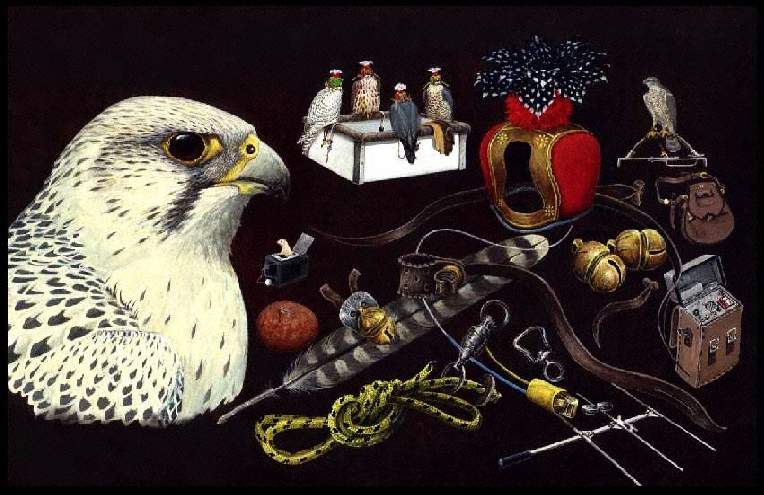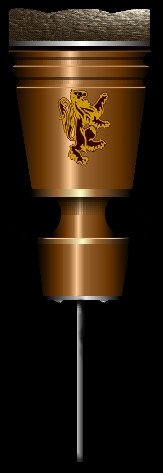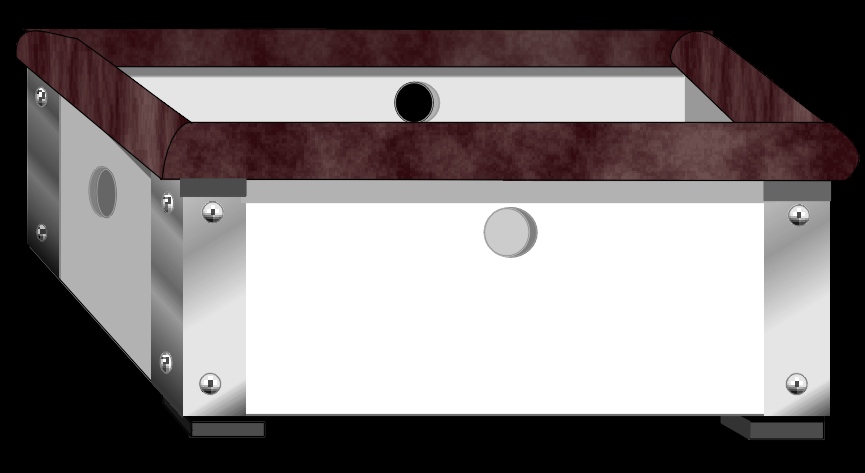Falconry furniture |
11 Box cadge (used to carry several hawks together) |

1 |
2 |
3 |
4 |
5 |
6 |
7 |
9 |
9b |
9a |
5b |
2 Dutch hood (to cover the hawks eyes) |
10 |
10 Hawking bag |
Copyright Steven Jaremko1999 |
3 Bow perch (used mainly for hawks as opposed to blocks for falcons) |
5 Bells (used on legs and tail 5a and occaisionally around the neck) |
6 Leash and swivel ( attach to the jesses) |
9 Telemetry receiver a Transmitter bYagi directional ariel (for tracking lost hawks) |
4 Aylmeri anklet and jess (used on each leg) |
7 Falcon tail feather (showing imping pin in use) |
8 Ferret (in home made carry box) |
8 |
Gyrfalcon (Falco rusticulas) |
What is Falconry and Hawking? |
Falconry or Hawking is the practice of taking wild quarry in its natural habitat with trained Birds of Prey. Its origin goes back to at least 1000 BC. with some evidence dating it farther back than 2000 BC. It is believed to have originated in the Far East but may have developed in parallel. Despite being such an ancient sport it is still widely practised in many countries today with Europe the Arab states and the U.S.A. being at the forefront. The training of a hawk is time consuming and requires a degree of dedication that most people living in today's chaotic world are just not able to provide. The development of a working relationship with what is essentially still a very wild creature is a feeling that cannot be adequately described (not by me anyway!) The training of each hawk follows a carefully planned routine which has changed very little for hundreds of years, modern technology has had some effect, very few people today would consider flying their treasured hawks without the aid of telemetry. Radio tracking has now become as indispensable as the weighing scales (which are used to accurately measure the birds condition). Every day during the hunting season the hawk is weighed prior to flying and through knowledge gained from the hawks early training a reliable flying weight is achieved. This will obviously vary between species, try flying a kestrel at an eagle's weight! But more importantly flying weights will vary between individuals of the same species even of the same sex, and to complicate things even further the way the bird was reared will have an effect, also of course the weather. Entry into this unique practice should never be contemplated without a thorough preparation and preferably the guiding hand of a friendly falconer. Today many excellent courses are now available and much can be gained from these. But these should always be regarded as a an introduction, you will never stop learning and just when you think you know it all, your little feathered friend will be more than happy to surprise you. Many species of hawks have been used for falconry in the past and the present. The choice of hawk is controlled by many factors but in an ideal world one would always choose the species most suited to the intended quarry. (A list of hawks and their target quarry species will be included later) N.B. Laws and regulations regarding the keeping and hunting of birds of prey vary, not only from country to country but also from state to state and it is vital for the healthy continuation of falconry that you familiarise yourself with these and abide by them at all times. A much more in depth account will be included shortly with relevant references, but at the moment I just want to get this damn page out. |
A List of Falconry Terms * Terms rarely if ever used today Aeri - the nest of an eagle Arms - the lower part of a hawks leg Austringer - someone who flies hawks (shortwings) as opposed to falcons (longwings) (Fr. autousier) To Bate -To fly off the fist or perch, either at quarry or through being disturbed (Fr. battre) Beam - The primary wing feathers Bechins - Small food bits or mouthfuls (Fr. bechee) Bewits - Leather strips for leg bells To bind to - To catch and cling to the quarry Block - A perch used for falcons Bow perch - A perch used mainly for hawks Box cadge - A heavy, padded open box used to carry several hooded hawks during transport Brail - The practice of tying a wing on an excitable bird, now only used for injured or disabled hawks Bowiser / Brancher - A young hawk at the development stage of being able to jump from branch to branch Bolt - To fly straight at quarry, used mainly for hawks Bowse - To drink (Dutch - buisen) Blood feathers - Feathers which are still in growth Break in to - Begin to eat Cadge - See box cadge Cadger - Person who carried the cadge, cadger- someone who tries to get things for nothing probably originated from this. The cadger or cadgeboy would often be given tips by the hawking party for his stories and help Call-off - To call the hawk to the fist Carry, to - To carry the hawk on the fist in order to tame it (see manning) or when the hawk flies off with its prey Carriage - As in carrying to tame .................................................... STILL BEING COMPILED |
Items not to scale |




